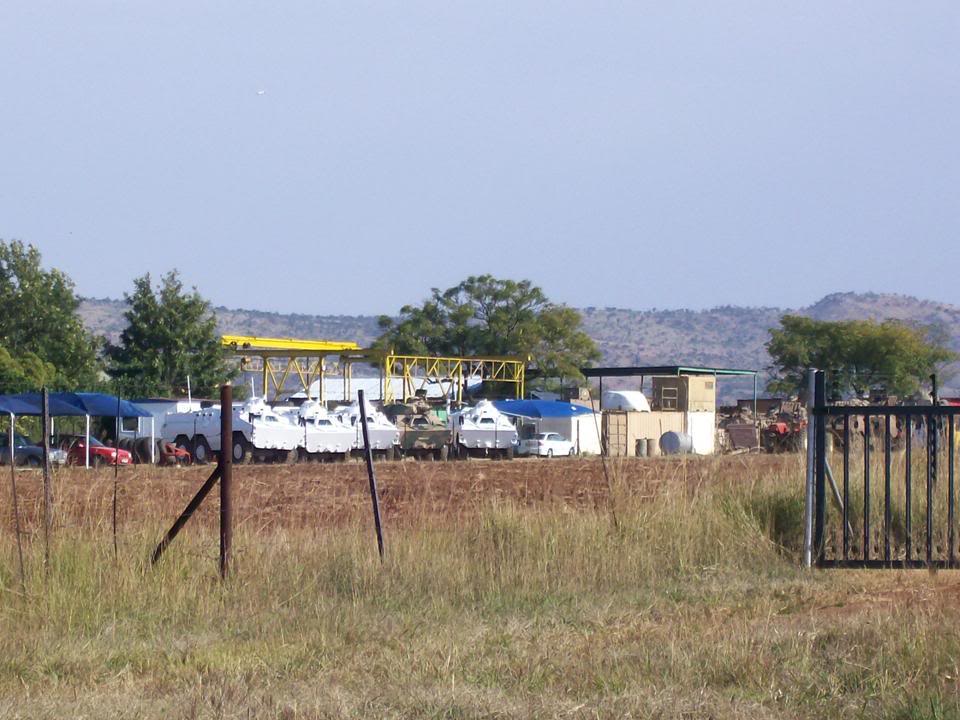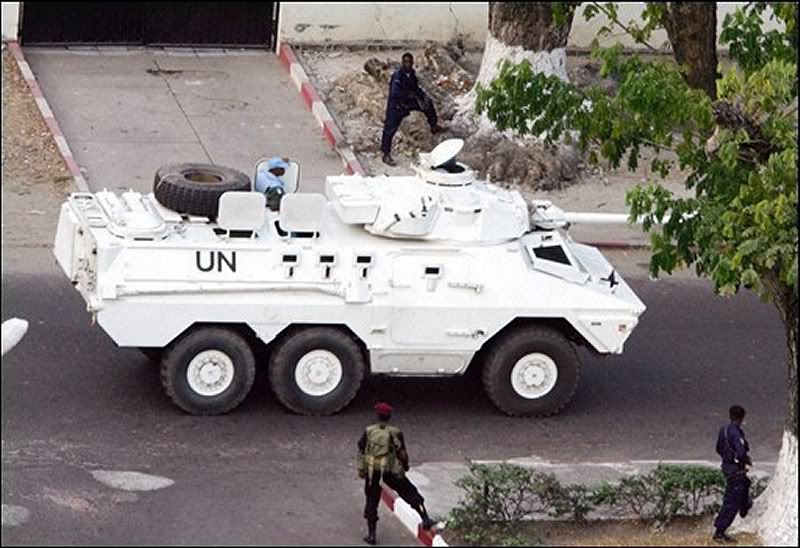White is not always right
Posted: Wed Jun 04, 2008 10:12 am
...especially when it is the new colour of a Ratel Infantry Fighting Vehicle. Took this 'spy pic' yesterday near Hartebeespoortdam. I think they are being painted white for UN use? But I'm sure die-hard ex-SADF members and National servicemen will agree with me - it just look WRONG!
(I was motorised Infantry in my days. We had to rely on our boots for transport. Getting a lift in a Ratel was considered a luxury.)

From http://en.wikipedia.org/wiki/Ratel_IFV :


(I was motorised Infantry in my days. We had to rely on our boots for transport. Getting a lift in a Ratel was considered a luxury.)

From http://en.wikipedia.org/wiki/Ratel_IFV :
I like this look moreThe Ratel is the basic Infantry Fighting Vehicle (IFV) of the South African National Defence Force's mechanized infantry battalions, and is named after an African animal known in English as the Honey Badger, which has a reputation as a ferocious fighter.
The 6x6 Ratel was indigenously developed by Sandock-Austral (now owned by Land Systems OMC, part of BAE Systems) and produced in volume for the South African Army in subsequent decades. Design work began in 1968, with prototypes completed in 1974. Production of the basic Ratel-20 started in 1976, which entered operational service in 1977. Other variants, including the improved Mark II and Mark III versions of the basic Ratel, were phased in over the subsequent decade. Mark I vehicles were upgraded to Mark II and III standard during refits. Over a thousand Ratel vehicles have been manufactured.
The Ratel was the first wheeled IFV to enter military service, and is generally regarded as an influential design; a number of other countries have since produced vehicles similar to the Ratel, including the Sibmas from Belgium, which is all but a direct copy, as well as a number of South American designs. The Ratel-20 is the primary squad IFV, with the Ratel-60, Ratel-90, and Ratel-ZT3 (the anti-tank guided missile version) used primarily in anti-armour, support, and reconnaissance elements within a battalion. The vehicle usually carries a crew of four or five men, with a seven-man infantry squad.
The vehicle was designed with the South African environment and the combat experience of the South African Defence Force (SADF) foremost in mind. For example, it has considerably more firepower than most comparable infantry fighting vehicles--ranging from machine guns up to a 90-mm cannon. Modern versions can therefore be considered to have evolved into multi-role armoured vehicles from their original infantry fighting vehicle design.

